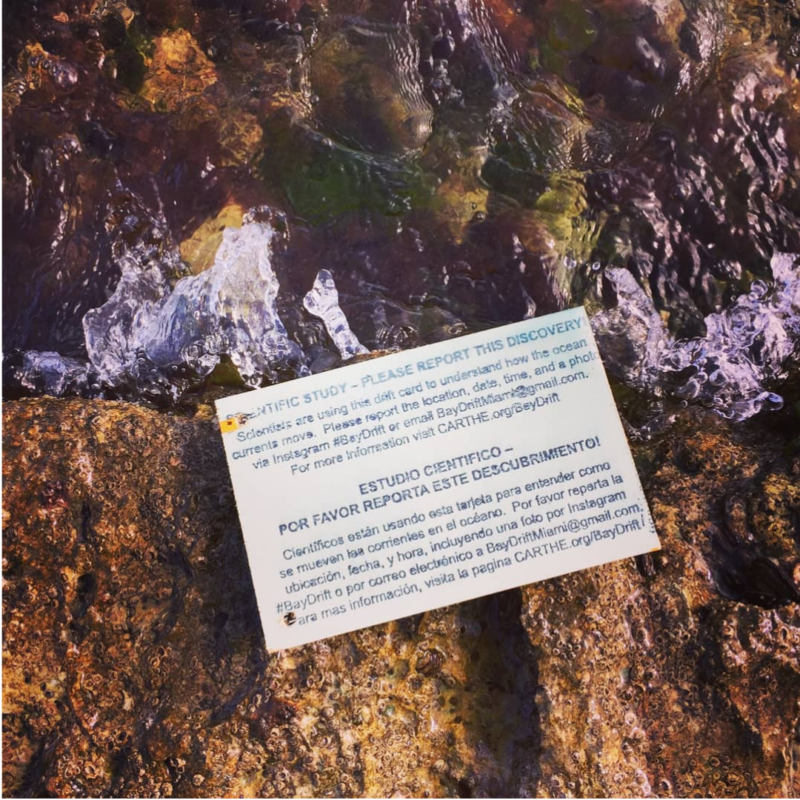If you search Vizcaya on Google Earth, you’ll see a lush green space in the middle of Miami’s urban core.
Those 50 acres, part of the original 180-acre James Deering estate, have been preserved as Vizcaya Museum and Gardens, a mix of formal gardens, a rockland hammock, a mangrove shore, and an exquisitely restored historic main house filled with a decorative art collection.
But Vizcaya is home to so much more than art and history. Various wild creatures live in and around the property, and every year, Wild Vizcaya brings scientists and visitors together to learn more about them. This program is designed to engage students in science outside of a laboratory setting and to break down science concepts and content to be consumable by anyone, regardless of prior knowledge or engagement in the subject matter. Wild Vizcaya inspires a shift in behavior, creating a deeper community engaged in preserving Vizcaya, Miami, and the world around us. Since the first school edition of Wild Vizcaya, over 630 students of various ages and backgrounds have connected with over 44 experts on topics such as scientific illustration, marine science, herpetology, and native ecosystems.
With support from the Kirk Foundation, Wild Vizcaya connected 246 middle-school students from Southside Preparatory Academy, Rockway Middle School, and Shenandoah Middle School with six science-based organizations!
The featured organizations for Wild Vizcaya 2022 include:
Horticulture & Sustainability, Vizcaya Museum and Gardens
Vizcaya Museum and Gardens’ Horticulture and Sustainability team designs, plans, and maintains horticulture and landscape projects to enhance displays and living collections.
They also work to preserve the various ecosystems that exist at Vizcaya, including the rockland hammock and the mangroves. Students explored the rockland hammock with Vizcaya’s expert horticulturists. They learned about the various plant species and fauna that reside there.
Coral Restoration Foundation
The Coral Restoration Foundation is one of the world’s most extensive coral reef restoration efforts. It actively works to restore the coral reef through educational activities, outreach programs, and scientific collaborations.
Students learned about the effects of UV light on stony coral and the natural adaptations that protect the corals, such as the production of mucus. They also created slime to mimic the mucus and learned how it protects coral from drying out, removes surrounding bacteria, and helps catch prey.
UF/IFAS Extension and Florida Sea Grant, Miami-Dade County
Florida Sea Grant is a university-based program partnered with coastal and ocean scientists throughout the state that supports research, education, and outreach to conserve coastal resources. By balancing coastal protection and economic development, Florida Sea Grant aims to create resilient communities with federal resources and funded research.
Educators from University Florida/IFAS and Florida Sea Grant informed students about the benefits of preserving Mangrove forests, as they help protect our coastlines, are home to a diverse wildlife community, and are highly productive ecosystems.
Miami Waterkeeper
Miami Waterkeeper is an organization that advocates for South Florida’s watershed and water life through clean water initiatives and focuses on ecosystem protection and sea level rise resiliency.
Students learned about the benefits of protecting our waterways and how improper waste disposal can lead to microplastics in our oceans. They also tested water samples they collected from Biscayne Bay and collected data on the water’s pH, dissolved oxygen, air temperature, and turbidity.
Tropical Audubon Society
Tropical Audubon is an organization dedicated to protecting and restoring native habitats, birds, and other South Florida wildlife. This organization focuses on water quality and habitat sustainability around Biscayne Bay, Florida Bay, and the Everglades.
Students learned about the various bird species in South Florida, such as the Great Egret, Brown Pelican, Great Blue Heron, and the Laughing Gull. They explored the estate using binoculars and participated in a bird-watching scavenger hunt.
Pelican Harbor Seabird Station
Pelican Harbor Seabird Station is Miami’s premier native wildlife hospital evolving into a world-class wildlife rescue, rehab, release, and education center. Pelican Harbor is dedicated to improving the lives of injured, sick, and orphaned wildlife to release healthy patients into the ecosystem. Since their inception, over 39,000 patients and 300 species of birds have been treated.
Students learned about the history of the Seabird Station, information on the types of patients they receive, common injuries, and how students can make a difference in protecting wildlife. To meet the students, Pelican Harbor Seabird Station brought two ambassador animals, an Eastern Screech Owl, and an opossum!
SUPPORT THE WORK
Help us continue to preserve this National Historic Landmark and share it with our community through programs like Wild Vizcaya and much more.
Click below to make a donation online today.















